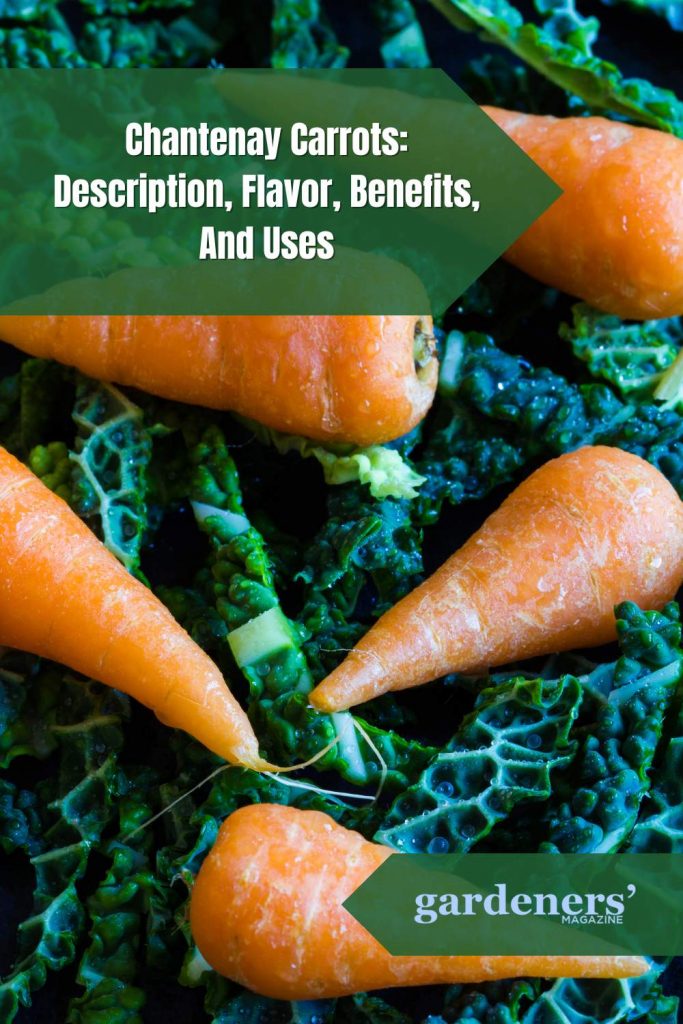Chantenay carrots are a variety of carrots characterized by their round shape and deep orange color. They are easy to grow and have a sweet yet nutty flavor that adds great taste to any dish. Chantenay carrots are the most popular today due to their versatility and rich flavor. In this article, we will explore the different aspects of Chantenay carrots, including their nutritional value, growing tips, culinary uses, and more!
What are Chantenay Carrots?
Chantenay carrots are a type of carrot characterized by its round shape and deep orange color. They have a sweet yet nutty flavor, making them a popular choice for salads, side dishes, and other recipes. The Chantenay variety of carrots was first developed in France in the late 19th century and has since been beloved by gardeners worldwide.

History and Origins of the Chantenay Carrots:
The Chantenay carrot is a type of carrot that originated in the town of Chantenay, France. The French were the first to cultivate carrots during the 16th century, making them one of the earliest recorded vegetables grown in Europe. Chantenays were developed in the early 19th century and have become popular for their sweet and juicy taste. They are considered an intermediate between the common carrot and a baby carrot, with a shorter, stubbier shape. Chantenay carrots are known for their bright orange color and sweetness.
The Chantenay variety of carrots is grown all over Europe, but it is particularly popular in France, one of the most widely grown carrots. In the United States, Chantenay carrots are mostly found in specialty stores or farmers’ markets, although they can also be purchased online.
Description of the Chantenay Carrots:
These carrots have a shorter, stubbier shape compared to traditional long carrots. They typically grow about 5-6 inches long and have a conical shape with broad shoulders and a tapered tip. The stout and thick roots make them easy to handle and chop.
One of the distinguishing characteristics of Chantenay carrots is their vibrant orange color. The outer skin is smooth and firm, while the flesh is crisp and juicy. The natural sweetness of Chantenay carrots makes them a popular choice for raw consumption and cooking.
Cultivation of the Chantenay Carrots:
The Chantenay carrot is a type of heirloom, a short-rooted variety of carrots from France. It has a mild sweet flavor and is usually harvested when it reaches 3 to 4 inches long. Chantenay carrots are grown best in sandy soils with plenty of organic matter, such as compost, to provide nutrients for vigorous growth. The soil should be kept evenly moist and well-drained throughout the growing season. To ensure good drainage, raised beds are recommended for Chantenay carrot cultivation.
Before planting, it is also important to ensure the soil pH is between 6.0 and 7.0 — otherwise, the carrots may not grow well. Additionally, the soil should be free of any weeds or other large objects that could obstruct root growth. Chantenay carrots are typically planted in spring or early summer after all danger of frost has passed. The seeds should be planted at a depth of 1/2 to 1 inch and spaced 2 to 3 inches apart. It is important to thin out the seedlings once they get larger, leaving the sturdiest plants with at least 3 to 4 inches of space between them.
What do Chantenay Carrots Taste like?
Chantenay carrots have a sweet, earthy flavor. They are often described as having a more intense flavor when compared to regular, long carrots. The texture of Chantenay carrots is crunchier and denser than other varieties, giving them additional appeal for snacking or cooking. Their bright orange makes them attractive for dish use, adding a pop of color to any plate.
Health Benefits of the Chantenay Carrots:
Chantenay carrots are packed with numerous health benefits. They contain a high amount of beta-carotene, converted into vitamin A, and help maintain healthy skin, vision, and immune system function. Additionally, they’re an excellent source of fiber, vitamins C and K, potassium, calcium, magnesium, and iron. Eating Chantenay carrots may help reduce cholesterol, prevent cardiovascular diseases, and improve digestion. They are also low in calories and fat-free, making them an ideal snack choice for those looking to maintain a healthy weight.
Additionally, the prebiotic properties of Chantenay carrots can help support beneficial bacteria in the gut, improving digestion and overall health. Finally, Chantenay carrots contain various antioxidants that can help reduce inflammation and protect against free radical damage. All these benefits make Chantenay carrots an excellent addition to any healthy diet.

Where are Chantenay Carrots Grown and Harvested?
Chantenay carrots are grown and harvested mainly in Europe, the U.S., Canada, Australia, and New Zealand. In Europe, they are most often grown in France but cultivated in other countries, including Germany, Italy, Spain, Belgium, and the UK. In North America, they are most commonly found in the US states of California, Washington, and Oregon. They are grown in Queensland, New South Wales, and Victoria in Australia. And in New Zealand, Chantenay carrots are mainly grown on the North Island.
The harvesting season for Chantenay carrots usually runs from June to October, depending upon the region. High-quality Chantenay carrots require soil with good drainage, plenty of organic matter, and a pH between 6.0 and 7.0. The carrots should be harvested when fully mature but firm to the touch. After harvesting, Chantenay carrots should be stored in a cool, dry place with temperatures between 32-40°F (0-4°C). Storing them in a plastic bag also helps with freshness. Chantenay carrots should be within two weeks of harvest for optimal flavor and nutrition.
How to Use Chantenay Carrots in Recipes?
Chantenay carrots can be used in a variety of recipes. They are especially versatile when paired with other fruits and vegetables, as the sweet flavor of the carrot brings out the natural sweetness in most produce. Try roasting them with apples and onions to make a flavorful side dish, or adding them to a stir-fry with broccoli, peppers, and mushrooms. They can also be added to soups, stews, and casseroles for a unique twist. For something different, try making a carrot-apple smoothie by blending Chantenay carrots with apples and yogurt in the blender. The sweetness of the fruit and veggie will provide a delicious combination that everyone will love!
Conclusion:
Chantenay carrots are a unique variety with a distinct flavor and texture. They are easy to find in many parts of the world and have become increasingly popular due to their sweet taste and ease of use in recipes. Whether you enjoy them cooked, raw, pickled, or glazed – Chantenay carrots make an excellent addition to any meal! So remember to add this crunchy veggie to your next recipe – you won’t regret it! Enjoy!
- Everything You Wanted to Know About Red Tamarillos - June 2, 2025
- A Guide to Tulips: Everything You Need to Know & More… - June 2, 2025
- Guanabana: Description, Flavor, Benefits, And Uses - May 27, 2025

8 thoughts on “Chantenay Carrots: Description, Flavor, Benefits, And Uses”
Comments are closed.